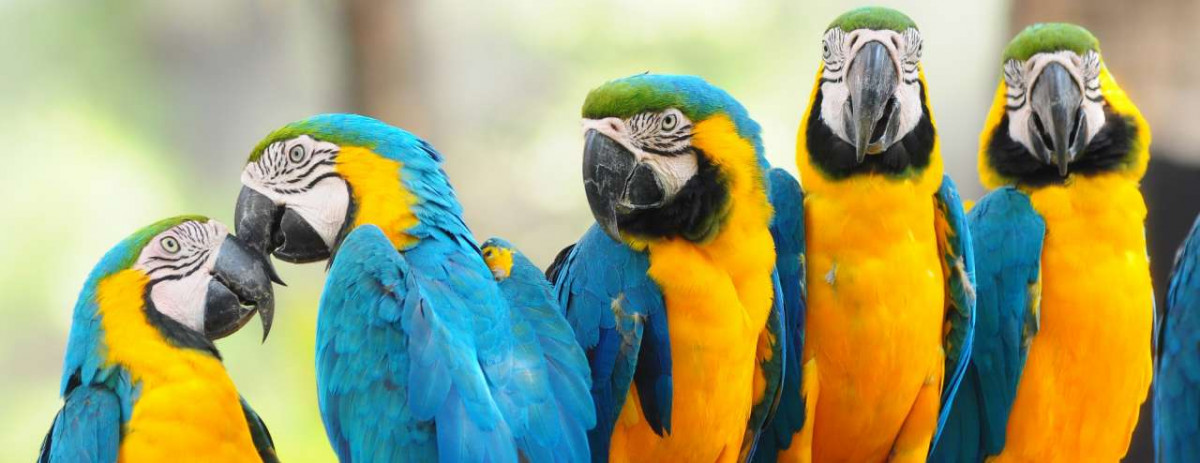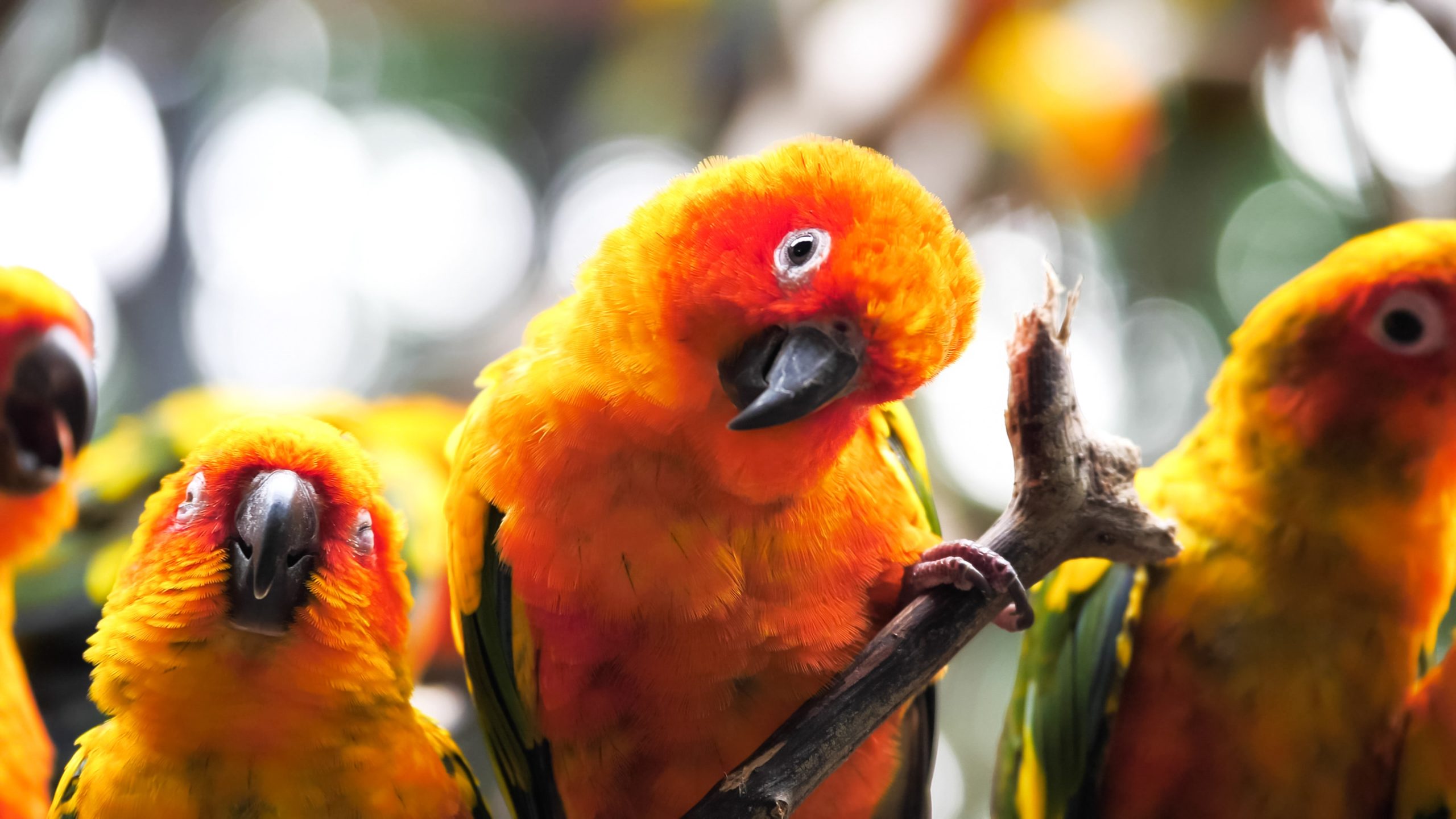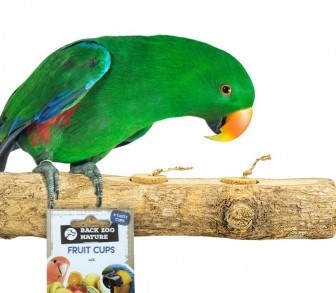Overheating in birds: Understanding, Recognizing and Acting
The warm weather is a challenge for many pets and owners, and birds are no exception. Although birds are more resistant to heat than other pets, they are still prone to overheating.
In this blog about overheating in birds, we explain why birds are more resistant to heat, how you can ensure that your bird gets through the summer comfortably, how you can recognize symptoms of overheating and what measures you can take to help your bird .
Where do our birds come from?
Most of the birds we keep as pets are exotics. This means that your bird does not naturally occur in the Netherlands. For example, the budgerigar, also known as the Australian parakeet, comes from Australia. The Canary comes from the Canary Islands, The Agapornis better known as the Lovebird comes from different parts of Africa. And the Forpus comes from Central and South America.
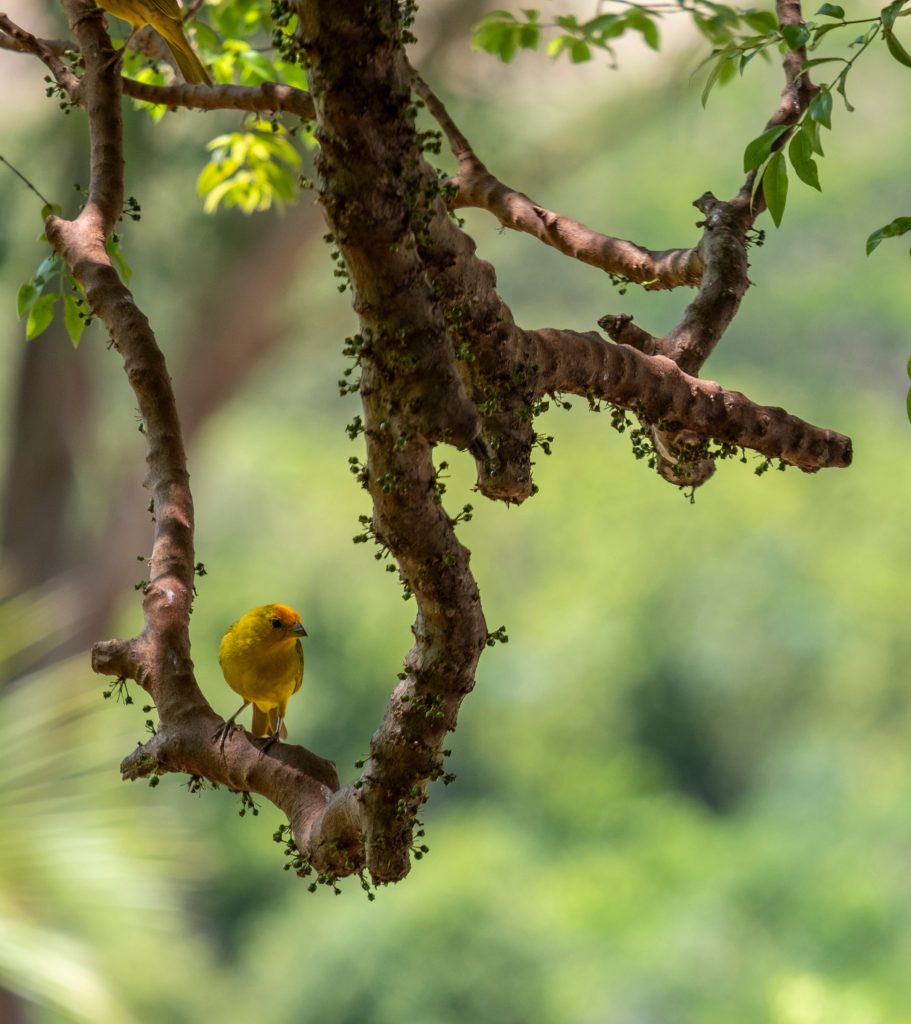
Why can birds handle the heat so well?
As you already know, most of our colored house birds occur naturally in a different climate. As a result, birds have several physical and behavioral adaptations that help them better cope with hot weather.
Birds have evolved over millions of years and adapted to different environments, including those with warm weather. They have developed natural instincts and behaviors that help them respond appropriately to heat and regulate their body temperature. Birds' ability to instinctively know what to do in hot weather is thus a result of evolutionary adaptations and genetic programming.
Instinct:
Birds have an innate behavior that urges them to respond to changes in temperature and environmental conditions. This instinct allows them to protect themselves from overheating and seek optimal comfortable conditions.
Adapted behavior:
Birds have developed innate behaviors that help them adapt to warm weather. They instinctively look for shady areas or places with coolness. Think of trees or shrubs, where they can find shelter from the direct rays of the sun.
Plumage:
Birds can fluff up or spread their feathers to allow air to circulate between the feathers and the environment. This allows heat to be dissipated and they can cool down in hot weather. In addition, some birds have special feathers around their beaks, such as toucans, that help dissipate excess heat.
Regulate body temperature:
Birds have special ways of regulating their body temperature and staying cool, especially during hot weather. They can dissipate excess heat by panting, which causes moisture to evaporate from their breath. This helps them cool down and lower their internal temperature.

Do birds need help during the hot weather?
The average house bird is tied to the environment or cage in which it is kept inside the house. Despite the fact that he instinctively knows what to do during warm weather, it is possible that his environment hinders him in this.
If you want to ensure that your bird gets through the summer, it is important to understand and respect your bird's instincts so that it is able to groom itself during the warm weather. As a result, you as the owner are responsible for ensuring that your bird is provided with the right environment during the summer.
What measures can you take to help your bird.
Although birds naturally know how to handle heat, their home environments can sometimes be a hindrance. As responsible bird owners, you can take steps to ensure your bird stays comfortable during warm weather.
With proper cage placement, plenty of shade, fresh water and being aware of your bird's overheating symptoms, you can ensure that your pet bird remains safe and happy even as temperatures rise.
Ventilation:
During the warmer days it is important that sufficient fresh air enters and that there is ventilation. This can be achieved by opening windows, using fans or turning on the air conditioning. While ventilation is important, it is also important to avoid drafts. Place the birdcage not directly in front of a fan or near a drafty area, as this can cool the birds to undesirable temperatures.
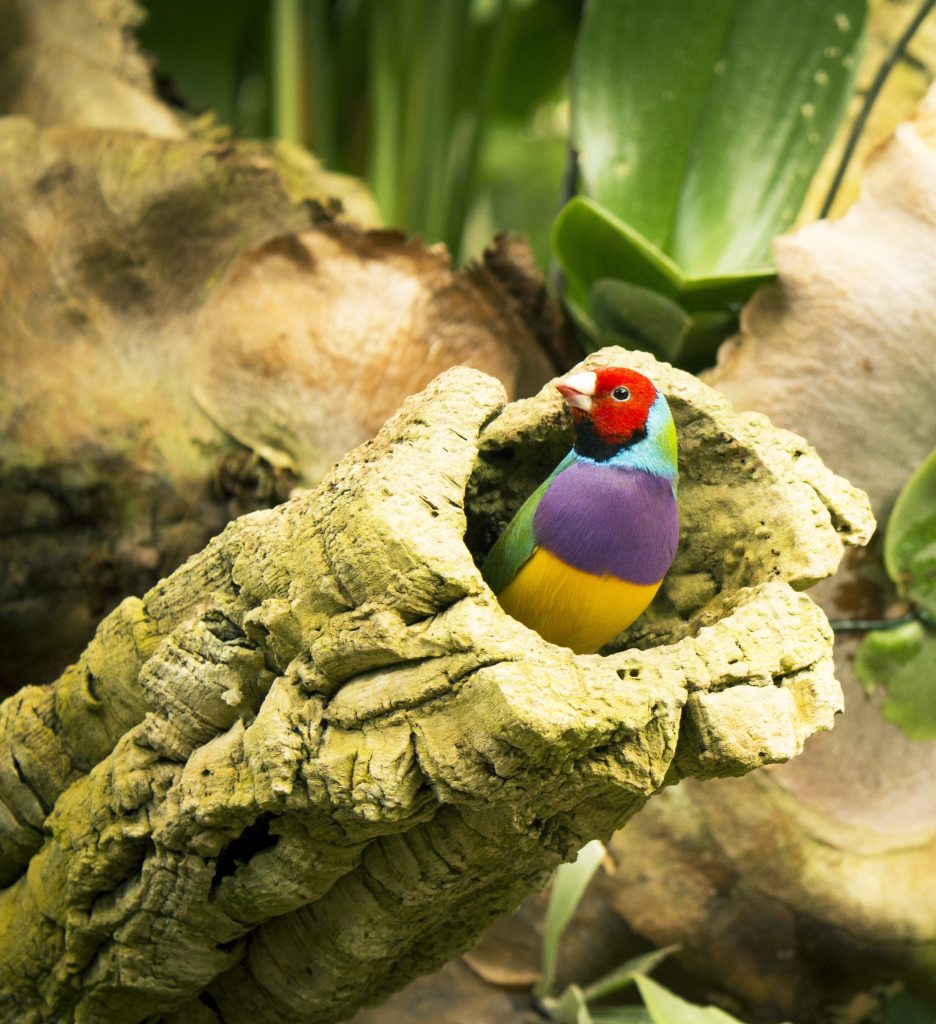
Provide a cool environment:
Place the birdcage in a cool and well-ventilated place, away from direct sunlight. Keep curtains or blinds closed to keep out the heat.
Offer shade:
To stimulate your bird's natural behavior, the yard is nice if you hang extra shelters during the hot days. The Back Zoo Nature Trunk Hut is the ideal natural shelter for your bird. The Trunkhut gives your bird the opportunity to stay out of direct sunlight and to cool down.
In addition to the fact that birds can hide in the Trunkhut, the cork also attracts to play with. Therefore the Back Zoo Nature Trunk Hut multi-purpose and there is a suitable size for every bird.
Provide plenty of fresh water:
Make sure your birds always have access to fresh, clean water. You can give your bird extra encouragement to drink by giving it access to a water fountain. Running water naturally attracts more to drink, because it is fresher, fresher and cleaner.
Nutrition, Hydration and cooling bird ice creams.
Offer moist foods, such as fruits or vegetables with a high water content, to help keep your birds hydrated. Also, make sure their food is fresh and not exposed to heat. With the Back Zoo Nature Fruit Cups can you make a delicious ice cream for your bird. The fruit cups are a refreshing snack with which you can offer your bird extra cooling during the warmer days in a tasty way.
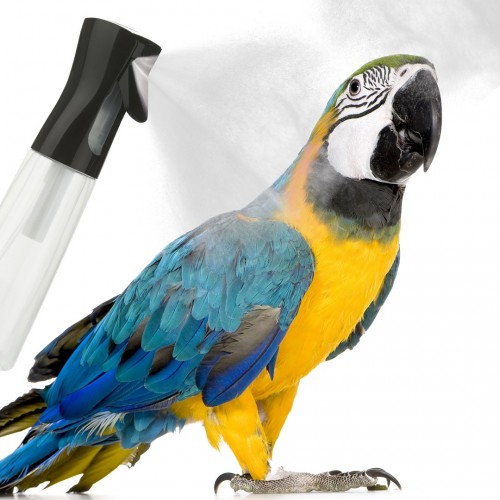
Atomization:
A light mist or spray of water can help lower the ambient temperature. You can Back Zoo Nature Extreme Mist Maker use to spray water directly onto your bird's feathers with a fine mist. Read more why the Back Zoo Nature Extreme Mist Maker is the ideal sprayer.
Refreshing water bath:
A lovely fresh water bath can be a good way to provide your bird with cooling in a natural way. Some birds prefer to splash in a shallow dish of water, while other birds prefer a gentle spray of water over their feathers.
The greenhouse effect! However, it is important to understand that wetting the plumage can also cause a greenhouse effect. When the feathers are wet, they can absorb solar radiation and trap heat, which can lead to dampness between the feathers. This has similar effects to global warming in a greenhouse, which can result in your bird overheating. That is why it is crucial to only offer your bird a refreshing bath or shower during really hot weather during the coolest times of the day, such as early morning or late evening.
How do you recognize overheating in birds?
Although your bird is resistant to beautiful and warm weather, it is still important to keep a close eye on your bird. Recognizing overheating in birds is important to take prompt action and help them.
Watch for signs of overheating, such as lethargy, open beaks, or scattered feathers. Overheated birds can become sluggish and inactive. They may move less than usual and retreat to a corner of the cage. They may look lethargic and show less interest in their surroundings. Birds may open their beaks and breathe rapidly in an attempt to dissipate excess heat. In doing so, they may falter or stand unsteadily on their feet.
What should you do if you suspect your bird is overheating?
If you suspect your bird is overheating, there are some steps you can take to help:
Move your bird to a cooler environment: Move the bird to a cooler room or shady area away from direct sunlight and drafts.
Offer cool water: Always have fresh, cool water available for your bird. You can also place a shallow dish of water in the cage for the bird to bathe in to cool off.
Humidify the environment: You can slightly moisten the bird's environment by misting water gently or placing a damp towel near the cage (make sure the bird is not sprayed directly).
Consult a veterinarian: If symptoms persist or worsen, it is advisable to consult a veterinarian for professional advice and treatment.
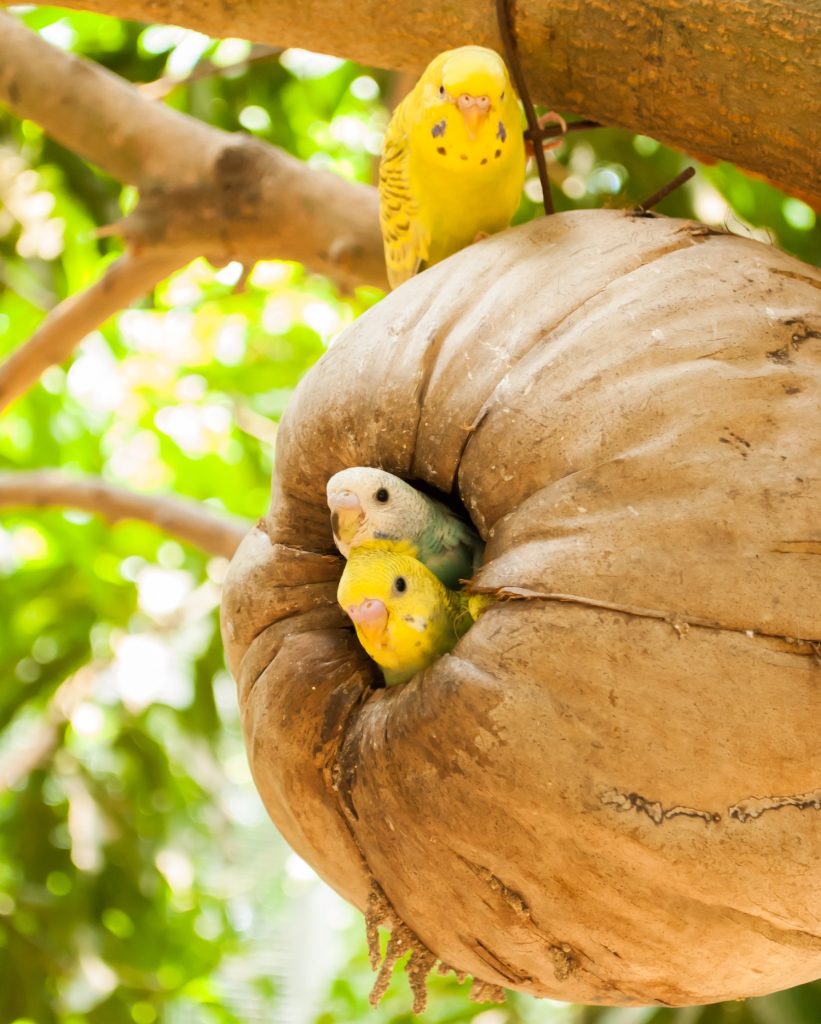
The natural ability of birds to fend for themselves during heat
We now know that birds are quite capable of fending for themselves during warm weather, provided all conditions are favourable. They have natural instincts and mechanisms to regulate their body temperature and cool themselves.
When all conditions are right, such as a suitable environment, sufficient shade, no direct sunlight, fresh air and fresh water, birds can manage themselves well during hot weather. They instinctively know how to react and adjust their behavior to avoid overheating. How beautiful is that!
Creating a natural living environment with the products of Back Zoo Nature
As a responsible bird owner, it is essential to design your bird's environment to match its natural behavior. Understanding your bird's natural instincts and creating a suitable environment are vital to its well-being, especially during hot weather.
The brand Back ZooNature offers a range of products specially designed to mimic your bird's natural environment. An example of this is the Trunk cabin, or a Coconut House a natural shelter that offers your bird a safe and comfortable resting place. Besides, there are leaves available that allows you to enrich the environment and create the feeling of a natural habitat.
By using these products from Back ZooNature you give your bird the opportunity to show natural behavior and to feel comfortable in its environment. This is very important for his well-being and contributes to a happy and healthy bird. So discover the products of Back ZooNature and offer your bird an environment that suits its natural needs during warm weather. Discover everything about the Back Zoo Nature brand here.


